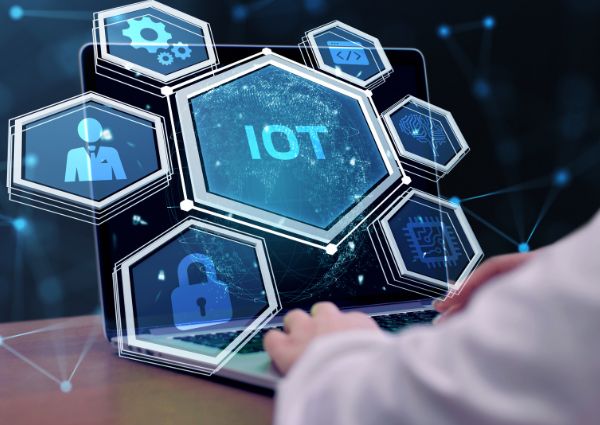The Internet of Things (IoT) is not merely a trend; it’s a paradigm shift that has the potential to revolutionize the way we interact with technology and our environment. As the IoT ecosystem expands, so does the necessity for innovators to develop IoT devices that are intuitive, reliable, and efficient. If you’re interested in embarking on this exciting journey, understanding the essential steps to develop IoT devices can unlock a treasure trove of possibilities. Here are five indispensable steps to guide you through the intricate process of IoT device development.
1. Define the Purpose and Scope
Before diving headfirst into the technicalities, it’s critical to clarify the purpose of your IoT device. Ask yourself: What problem does it solve? Who will benefit from its use? A well-defined scope includes identifying your target audience and their specific needs. For instance, creating a health-monitoring device would require different considerations compared to a smart thermostat. Pinpointing these objectives not only helps ensure that the development process remains focused but also fosters innovation. Engaging with potential users during this phase can yield invaluable insights, refining your vision into a superlative product.
Equally, consider scalability. As the IoT market grows, your device should have the capability to evolve. Can it adapt to new protocols or integrate new functionalities? Answering these questions from the outset is crucial.
2. Choose the Right Hardware Components
The heart of an IoT device lies in its hardware. Selecting the right components is pivotal for durability, performance, and cost effectiveness. Evaluate potential microcontrollers, sensors, and communication modules. Factors such as processing power, energy consumption, and compatibility with protocols like Wi-Fi, Bluetooth, or Zigbee are paramount. A savvy developer must balance these aspects with the budget, ensuring that the hardware aligns with the envisioned purpose.
Additionally, think beyond the immediate requirements. For example, if your device will collect extensive data, choose hardware with ample storage. With decisions made on the fundamental components, you carve out a sturdy foundation for your device, ensuring it can withstand operational demands and technology’s unyielding pace.
3. Software Development and Integration
Next up is the often-daunting area of software development. This is where the magic happens, but it’s also where complexities arise. Software must seamlessly interact with your hardware and manage data effectively. Your first step here is to select a suitable platform for development—options range from Arduino to Raspberry Pi, or specialized IoT platforms like Particle and Blynk.
Furthermore, you need to craft an intuitive user interface (UI). Remember that an outstanding device is only as good as its user experience. If users find it cumbersome to navigate, adoption will falter. Aim for a UI that is user-friendly and visually engaging. Employing rapid prototyping tools can facilitate this process, allowing developers to test and iterate quickly based on user feedback.
Moreover, security must be ingrained in the development process rather than tacked on later. With the increasing frequency of cyber threats, implementing robust encryption protocols and secure authentication methods is non-negotiable. A secure device engenders trust among users, establishing a solid reputation for your brand.
4. Connectivity and Data Management
In a world dominated by data, establishing reliable connectivity is vital. After all, the effectiveness of any IoT device hinges on its ability to transmit information to cloud servers or other devices. Selecting the right communication protocol can be a tangled web; each has its advantages and limitations. LoRaWAN, cellular, and MQTT are among the prominent options. A thorough evaluation of network type, distance, power consumption, and data throughput is essential to forge a robust connection.
Once data collection is in place, consider how this data will be managed and utilized. Data analytics plays a pivotal role in converting raw data into actionable insights. Employing machine learning algorithms can provide users with predictive insights, significantly enhancing the user experience. This brings us to the importance of privacy and compliance standards. Striving to meet regulations such as GDPR or HIPAA ensures your device is not only efficient but also ethical in handling sensitive information.
5. Test, Evaluate, and Iterate
The last and perhaps the most important step is to rigorously test your device. β-Testing in real-world environments unveils unforeseen issues that may not surface in controlled settings. Engage with volunteers or potential customers to provide feedback on functionality and usability. It is crucial to gather qualitative insights to address unforeseen hitches.
Incorporating this feedback requires a mindset open to iteration. The path of innovation is rarely linear; adjustments and improvements are part of the journey. By embracing a culture of continual refinement, your IoT device can evolve beyond its initial conception to become a sophisticated, indispensable tool.
Embarking on the journey of IoT device development is an exhilarating yet intricate endeavor. By following these five essential steps—defining purpose, selecting hardware, developing intuitive software, ensuring connectivity, and embracing rigorous testing—you’re well on your way to not just building a device, but unlocking a myriad of possibilities in the expansive realm of IoT. Each step is a building block to success, guiding you to create devices that are not just functional but life-enhancing, paving the way for a more connected future.
